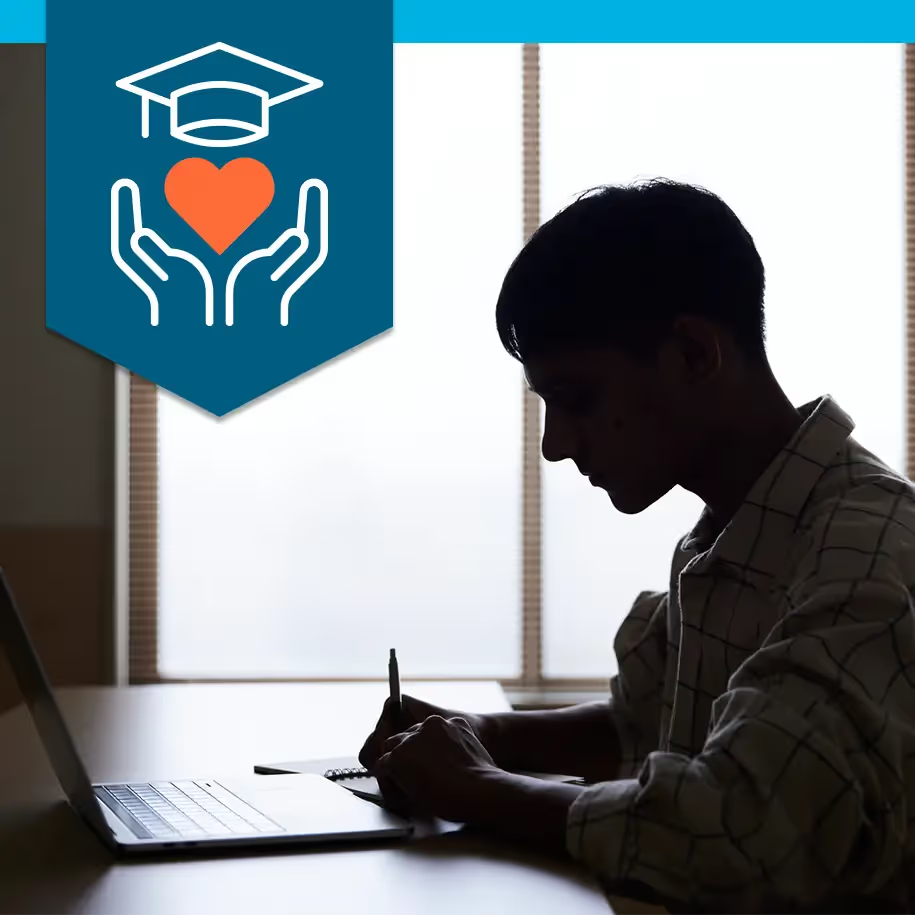
Strengthening the fundamentals of student support at your institution
Discover the steps that students, staff and leadership can take to achieve better outcomes
Luckily for those of us working on behalf of improving student outcomes, the key to student success isn’t buried in academic journals or hidden in a data algorithm. Institutions can learn everything they need to know by listening to students themselves.
Whether it’s delivered over the phone, by text or email, in person or on Zoom, personalized student support reveals a great deal about the student experience, and these insights help institutions provide the support students need to reach their goals. When this support focuses on noncognitive skill development, students build the capacity to thrive in and outside the classroom, and institutions build the capacity for ongoing improvement.
Yet as we know, providing this support isn’t easy – especially in challenging times. Identifying the most common challenges that can derail student support programs revealed that students, staff and leadership all have a vital role to play in enhancing student success. So we’ve broken down the fundamentals of student support for each group.
Fundamentals for Students
Foster lifelong success skills
Along with their degrees, students should leave higher education with the skills that support lifelong success. It can be tough to squeeze developmental skills into student meetings, especially when rosters are bulging, deadlines loom and uncertainty is high. But if student support teams can squeeze in just a few new questions and phrases — even simply asking “why?” — students get the chance to build critical skills like time management, problem-solving and perseverance.
Personalize support for every learner
Success skills can help students’ potential skyrocket — and that’s true for every learner, no matter their age, background or career stage. But not everyone benefits from the same support strategies. Tweaking details for each student — such as messaging, delivery and timing of student meetings — can personalize communication while staying true to the same core approach.
Take the stigma out of receiving help
Too few students take the initiative to seek support. If things are going well, they may not feel the need. If things aren’t going well, shame, stigma and feeling overwhelmed can keep them from reaching out. One fix is adopting a proactive outreach strategy. Proactive outreach reaffirms that student support is for all students, not just those who are deemed “at risk.” Plus, it can help build relationships before problems arise. And right now, with stress, anxiety and uncertainty at all-time highs, every student would likely appreciate the extra care and concern.
Fundamentals for Staff
Unite around a shared student support methodology
Working in an environment where everyone takes responsibility for student success is a good problem to have. But when each staff member takes a different approach, the resulting cacophony creates an inconsistent student experience. To make a measurable impact on student outcomes, student support teams should align around a single methodology — like a developmental approach that enhances students’ long-term success.
Collaborate and coordinate with other student-facing teams
Don’t let your focus on students distract you from what other teams are doing. When staff don’t know who is responsible for what, students don’t know either. Too often, support becomes hit-or-miss. One student might be contacted multiple times in one day, while another falls through the cracks. To better understand the functions of other teams — and shore up any gaps — create a student journey map that shows when students are interacting with which services.
Use multichannel outreach
Given the realities of our current world, face-to-face meetings can no longer be the gold standard of student support. Not only does reliance on in-person meetings strain staff time and resources, but now more than ever it limits support for students who need it most. Multichannel communication creates significantly more opportunity to connect – and connect safely – via text, phone, email, Zoom and other modes. Using the student’s preferred method of communication increases the likelihood that they’ll stay connected.
Fundamentals for Leadership
Match institutional goals to staff objectives
When frontline staff don’t understand institutional goals like enrollment or retention targets, the stakes may feel low for their own performance. Tracking metrics like number of phone calls or emails can be important, but unless the connection to student outcomes is made clear, staff engagement will lag. When establishing evaluation frameworks, it’s critical to take into account what makes the biggest impact on student success. Always measure what matters most — and students always matter most.
Provide professional development opportunities
The risks of lackluster professional development start with a disengaged staff and snowball to threaten student and institutional outcomes. Design trainings and workshops to address the key skills and competencies required for effective student engagement. Then help staff put learning into practice through ongoing quality assurance. Strong professional development can realign departments reeling from turnover and create a more cohesive team dynamic. One positive related to the pandemic is that trainings and workshops are typically online, making it possible for a greater number of staff members to attend and gain new information and insight.
Lead transformational change
When staff start complaining about the flavor-of-the-month, or saying they don’t want to change their work to suit the latest fad, you have initiative fatigue on your hands. The initiatives worth investing in are those that will create lasting transformation. Start by demonstrating buy-in at the highest levels and generating awareness and excitement about the new approach. When you equip staff with the knowledge and skills to see a new initiative through, motivation will follow.
Coaching solutions proven to advance all learners
Whether you’re looking to help students persist through completion or to improve career outcomes for job seekers and employees, our holistic coaching solutions can help you achieve meaningful outcomes.



